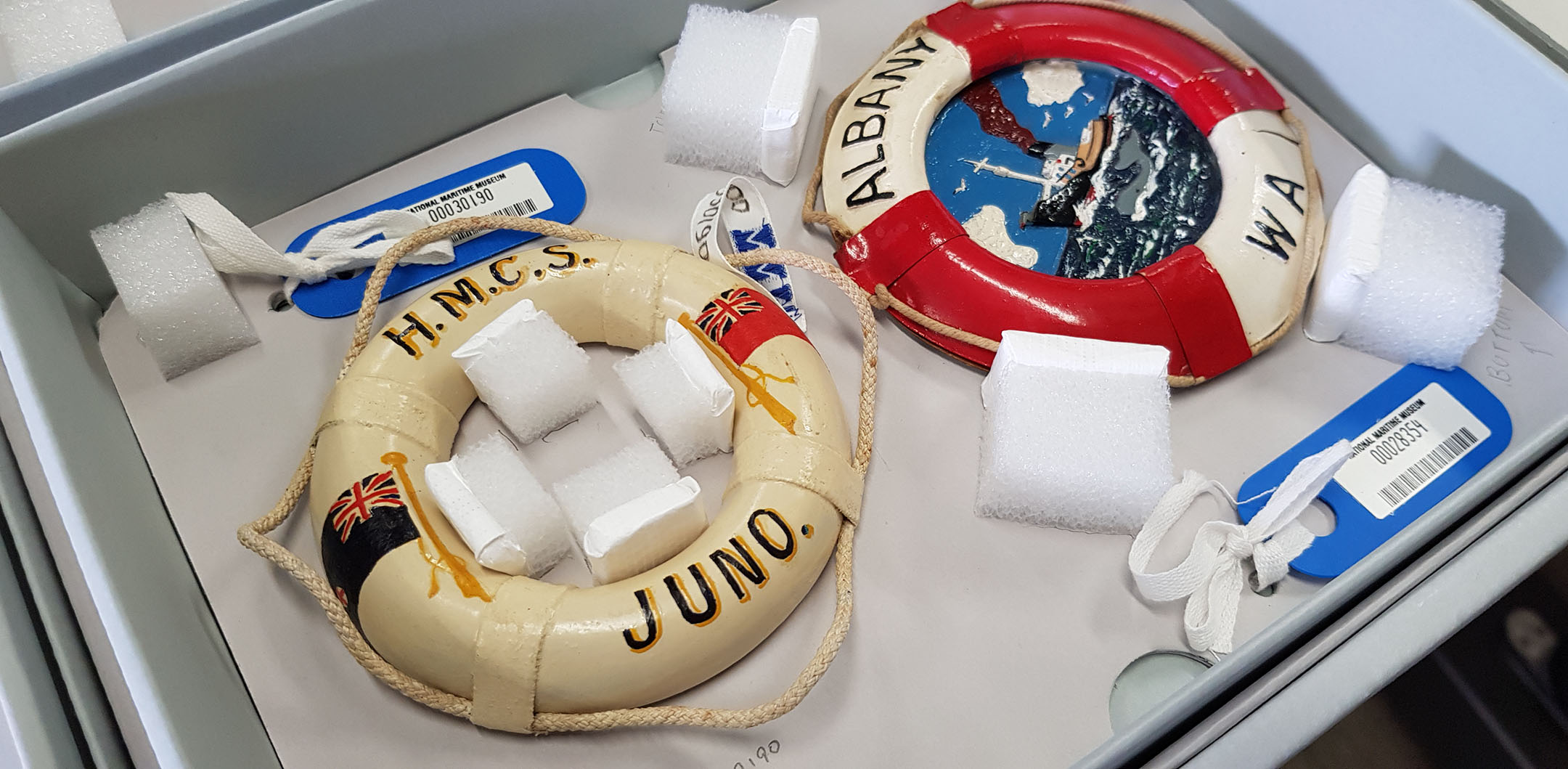
Bringing new life to a collection of life buoys
What do you do with 42 life buoys? Rehouse them!
For the conservation team, a recent rehousing project meant dozens of life buoys suddenly made their way to the conservation lab. Luckily, the life buoys were a bit smaller than you would normally expect!
Miniature life buoys were once a popular memento of voyages. The little life preservers in the museum’s collection cover the period of 1870-1977, from the age of tall ships to post-World War II holiday cruising. Some are lovingly handcrafted and others are mass produced plastic items from the gift shop. Each has a story to tell.
I chatted with conservator Lucilla Ronai to find out more...
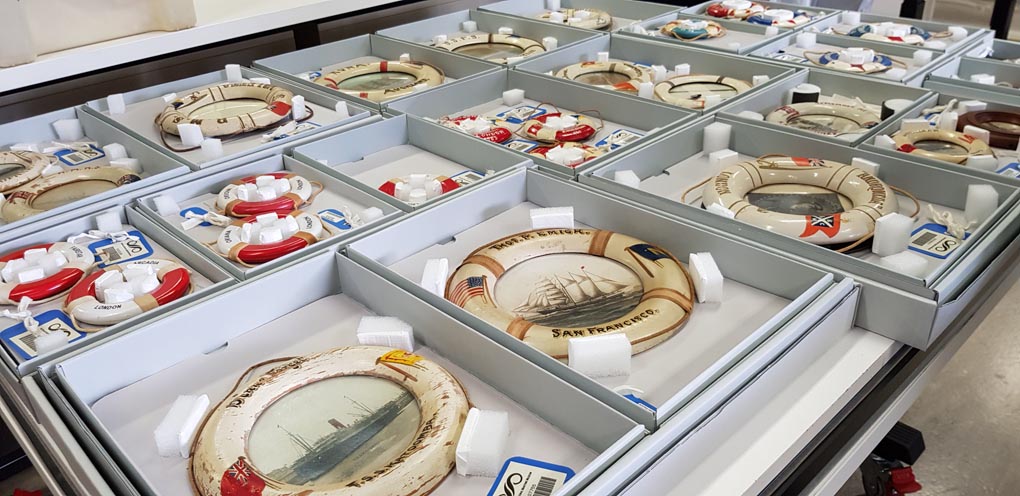
Rehousing items is a way to maintain their condition and prevent further damage without directly treating the objects. Image: Kate Pentecost/ANMM.
What is the meaning of life… buoy?
Miniature is a pretty general term. They're mostly souvenirs from voyages, and they all are generally a small size (the smallest approximately 10-by-10 centimetres), with a bit of variation. They often have text specifying a certain vessel they're associated with or a special voyage. Sometimes the objects include dates, or imagery, which are either photographs or painted images.
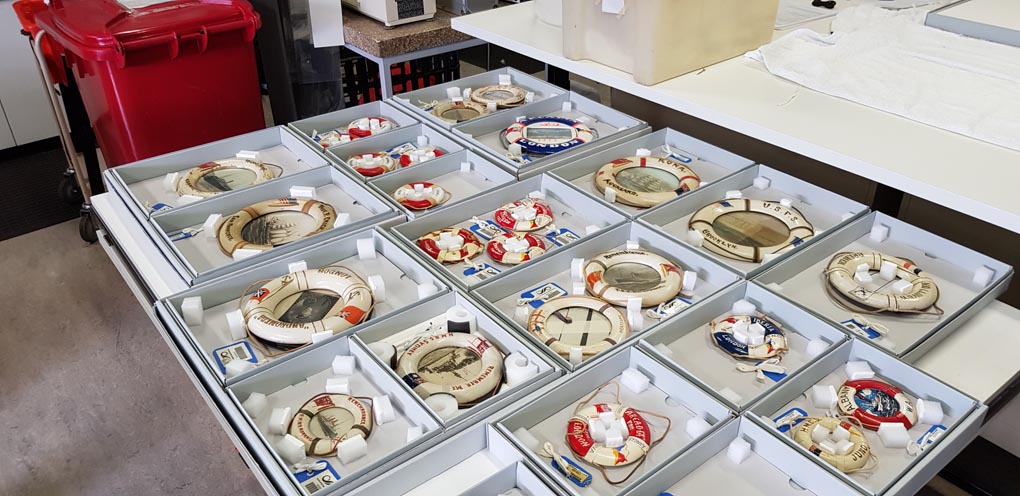
So many life buoys. Such a diverse collection of voyage mementos. Image: Kate Pentecost/ANMM.
The buoys are made with a wide variety of materials, including wood, plastic, metal, glass, textiles, rope, paper and paint. We even have some tape! That appears to be a later addition by some well-meaning person who… was clearly not a conservator (as we hate tape!). The condition of the buoys varies too.
Rehousing the (little) life preservers
The new housing had to be a long term storage solution. It had to fit within our storerooms and on our shelves, taking up as little space as possible while supporting the object and allowing easy to access one or all of the objects. Also you ideally wouldn't have to directly handle the buoys, you could just handle them by their housing (boxes).
I love seeing the buoys all together. Now, they're stored together and it seems like a really cohesive collection that could be displayed together someday.
Currently, they're all housed very differently across multiple storage rooms, interspersed with other collection items. So the main purpose of this project was to bring them all together in a cohesive housing system, to make sure that they're all supported appropriately because some of them are quite fragile. Also to make sure they're easy to access and handle.
All the materials we used are conservation grade, very supportive, light and easy to handle. The rehousing also meant that our photographers were able to digitise the objects, so now they are on our collection website in glorious high resolution!
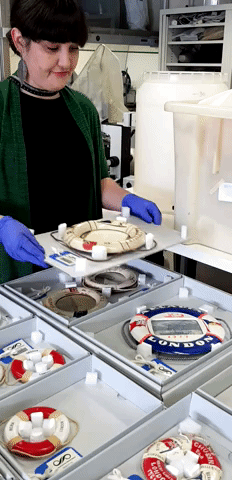
Conservator Lucilla Ronai demonstrates the system devised to house the buoys, of layers in archival boxes. Video: Kate Pentecost/ANMM.
Designing the storage system: giving our objects some buoyancy
Improving or creating new housing for items is a way to maintain their condition and prevent further damage without directly treating the objects. It's kind of an indirect way to improve the condition of these objects.
We used standard size boxes made from conservation grade corrugated board. These boxes fit on our shelves, and they can stack up on top of each other quite safely. They're light to transport and we also have smaller box sizes that all slot within the larger boxes. We made levels to fit multiple miniatures in a box and sometimes put two life boys next to each other to maximize space.
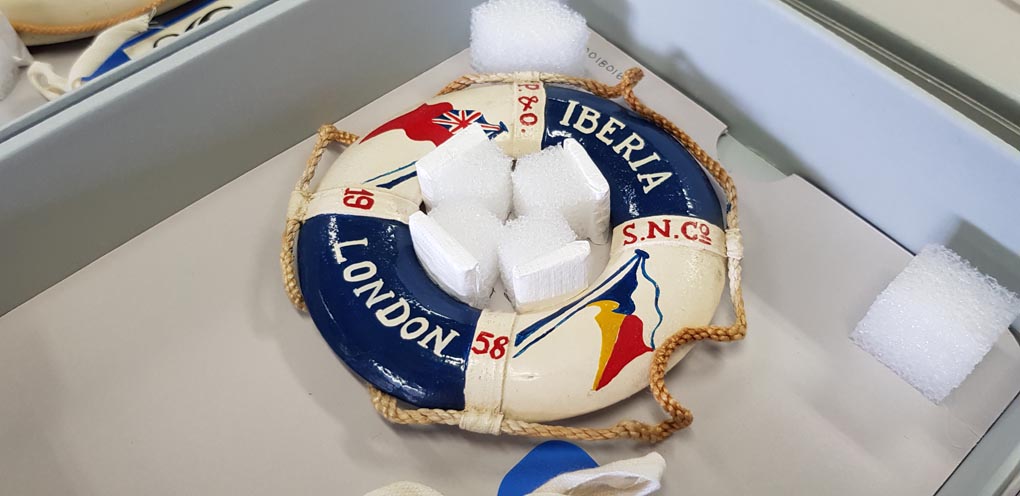
'Each buoy is secured in place by multiple pieces of polyethylene foam. The foam is covered in Tyvek... we want to make sure nothing abrasive comes in to contact with the life buoys.' - Lucilla Ronai, conservator. Image: Kate Pentecost/ANMM.
We also then customised these standard housings by placing extra supports to make sure the buoys were held securely in place. We don’t want them moving around during transport or handling. Each buoy is secured in place by multiple pieces of polyethylene foam. The foam is covered in Tyvek (another conservation grade material) and this is what's in contact with the objects. We want to make sure nothing abrasive comes in to contact with the life buoys.
We've also tried to group the life buoys together by material type, not by accession number. All the plastic life boys are together in one box, because plastic is usually unstable and will deteriorate over time. If we don't know what the plastic is, we don't know what chemical processes might occur, so the best thing is to separate these items.
How long is a piece of… rope?
The whole process took about six weeks. That included identifying and selecting the objects, getting them brought to the laboratory from the collection stores by our fantastic registrars, planning out the system and preparing the materials.
To make sure our planned system worked, we did a few mock trials. While the conservators planned out this housing, it was undertaken by one of our fantastic long term conservation volunteers. Sue is specially trained and she does incredible work.
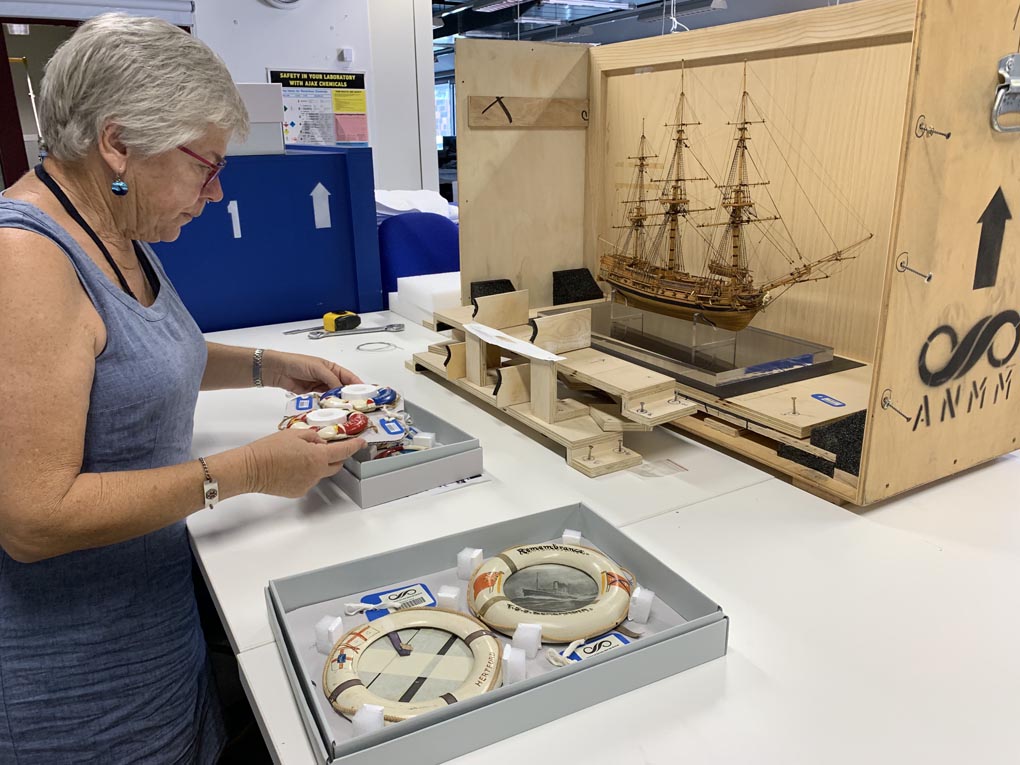
Conservation volunteer Sue Brian working with the life buoys. Image: Lucilla Ronai/ANMM.
Favourite life rings
Sometimes from photos you don’t really get a sense of how small these objects are. But when you see them in person, they’re charmingly small. Often hand sized. They're just so individual to each other, they each had their own little lives (you can tell that by the current condition they're in, from certain marks and discolouration). I think they've been well loved.
I also love reading the inscriptions and looking at the photographs of the boats and ships. My favourite is from HMAS Sydney (I). There's so much history there. It’s a lovely connection to a significant ship. I believe the flags are hand painted on the frame.
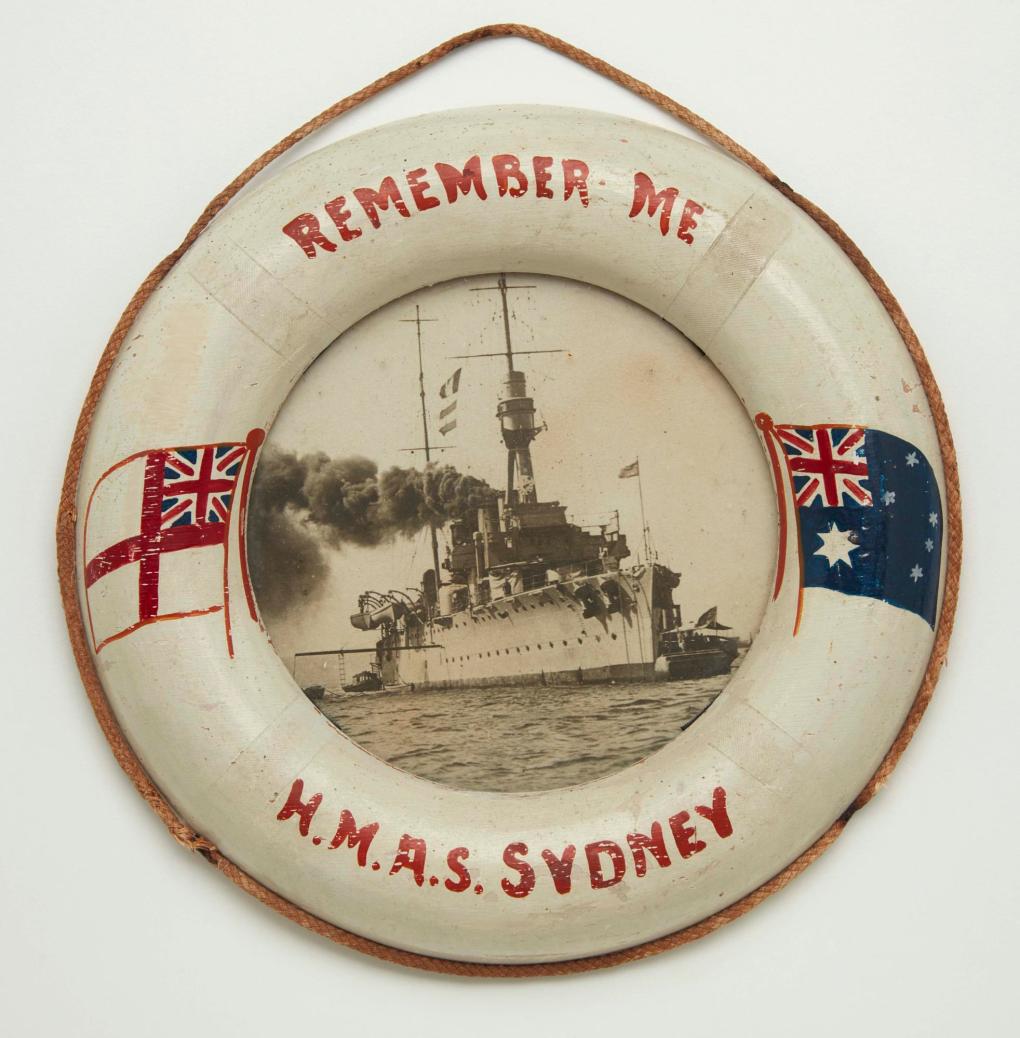
Miniature commemorative wooden lifebuoy with a hand painted inscription which reads "Remember Me - HMAS SYDNEY". ANMM Collection 00018383.
Challenges in keeping the buoys afloat
In some cases, the object is just the life buoy itself, with a hollow like a doughnut. In others, the buoy shape was used to create a frame, a recess to put a photograph or a painting in. That's where we get some different components appearing, such as metal hanging hooks attached to the buoy.
There were some challenging ones, with material that you do have to be very careful with. The buoys used as a frame often have glass held in place. But then there was one that appeared to have had a photo and at some stage, then photograph was taken out. The fragile glass is now only held in place by masking tape!
The masking tape was probably put on by a well-meaning individual, but conservators hate tape. Tape fails over time. It’s not meant to last. It does far more damage than it helps. The adhesive usually remains tacky… until suddenly it's not. It leaves staining and residue. This can accelerate the deterioration of the object itself.
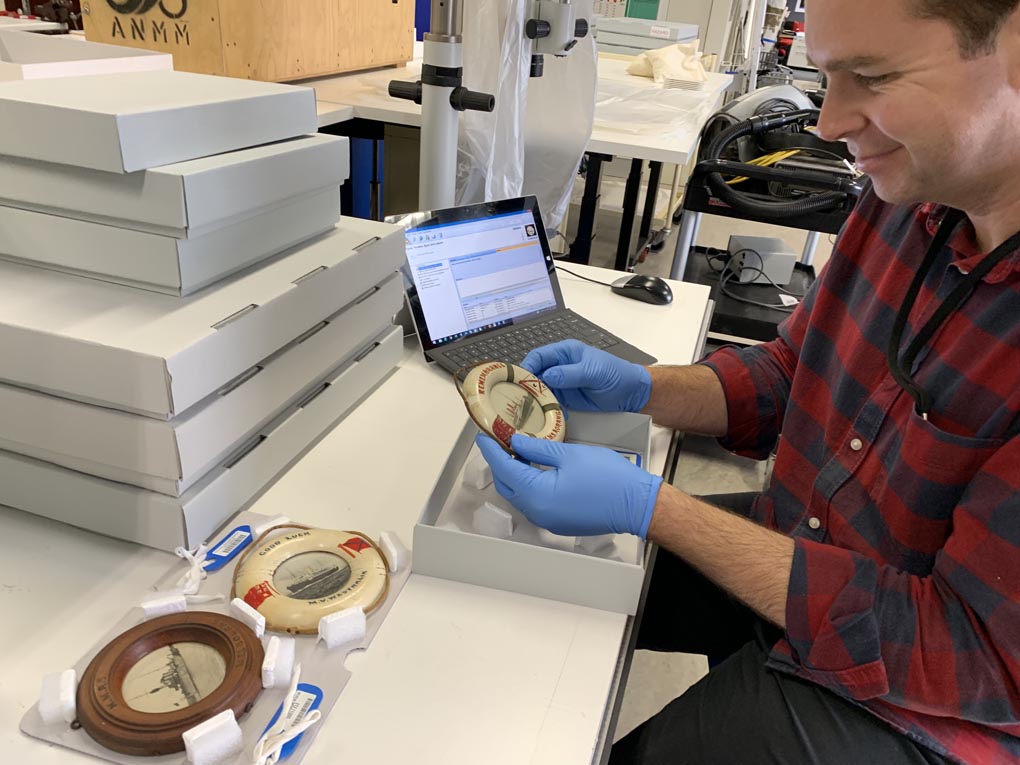
Each buoy was condition surveyed to assess it's storage needs before rehousing, then its condition and future treatment needs were recorded after rehousing. Pictured: Nicholas Flood. Image: Lucilla Ronai/ANMM.
Saving little lifesavers
Today, when we search for the objects on our collection management system, they come up with their beautiful, clear images. They look so good! You can zoom in on and see all that detail without needing to physically access the object. It's incredible.
I love seeing the buoys all together. Now, they're stored together and it seems like a really cohesive collection that could be displayed together someday.
